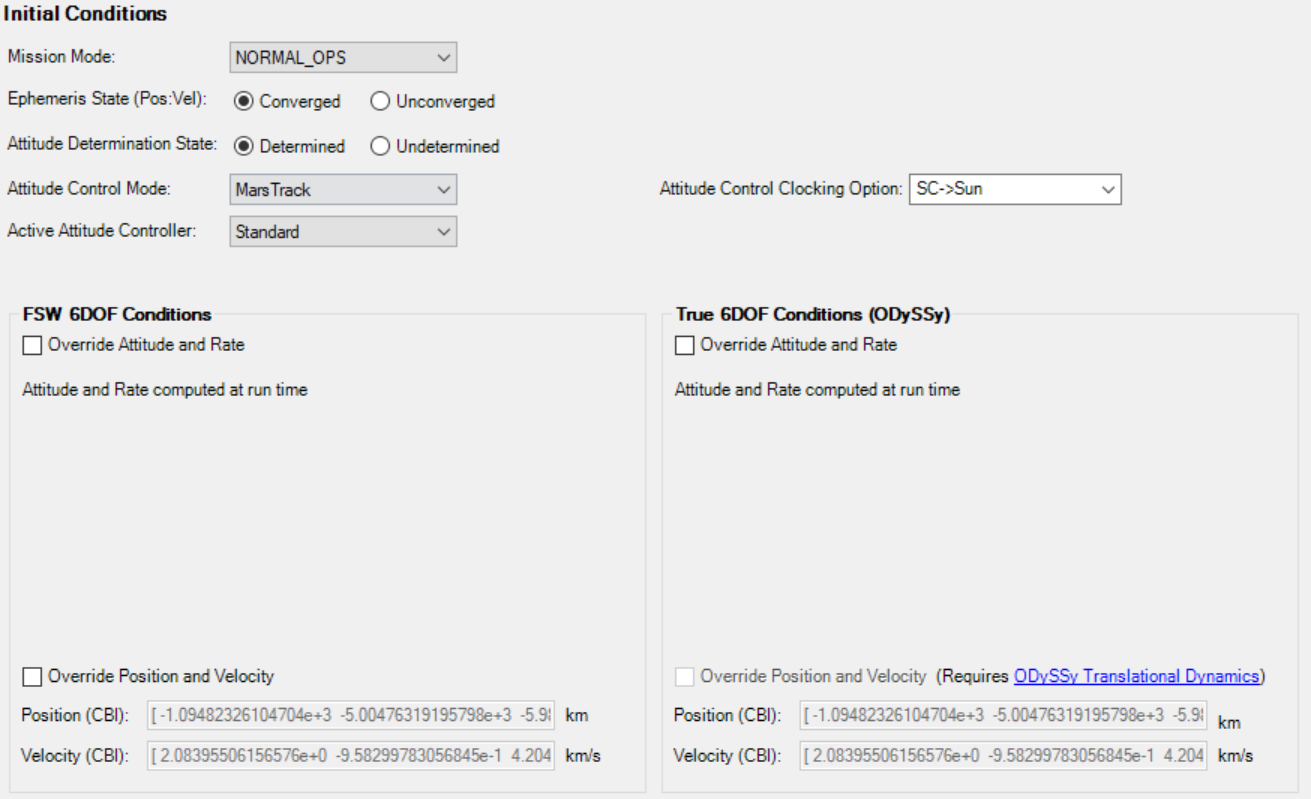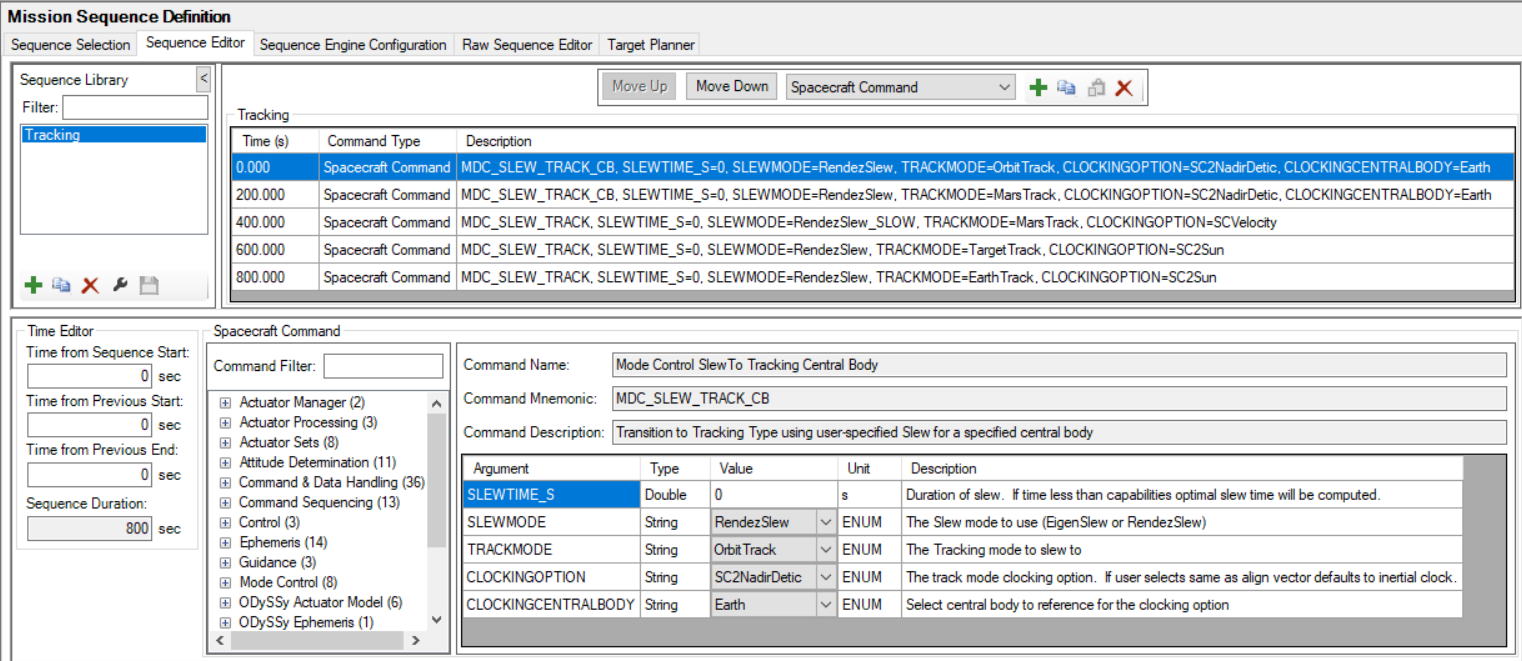Interplanetary
The purpose of this example scenario is to highlight SOLIS capabilities in relation to Central Bodies other than Earth. A spacecraft is configured to orbit Mars with a neighbor satellite nearby. There are a few key concepts to explore when interplanetary simulation is required.
Initial conditions
Let's start with the SOLIS Initial Conditions page. In this particular scenario, the initial FSW Attitude Control Mode is set to "MarsTrack" with the Clocking Option set to SC->Sun. In this configuration, SOLIS (using the STK Vector Geometry Tool) is able to resolve the initial attitude and rates. If you switch the Clocking Option to SC->Nadir (detic), an additional dropdown will appear for selecting the Clocking Central Body. Since Nadir is a term that can refer to multiple central bodies, you must specify which Nadir you are referring to.

Mode Controller
To understand what the FSW Attitude Control Mode "MarsTrack" means, let's go to the SOLIS Mode Controller page. Here you will see the #6 Mode configured to point at SC->Nadir (detic) with a Central Body of Mars. Notice that the #7 Mode (EarthTrack) is configured the same way, just with a different alignment Central Body. For Tracking Modes, the clocking arguments are given at command time. By default (MDC_SLEW_TRACK Command), the Clocking Central Body is set to the same as the Align Central Body. If aligning relative to one Central Body is desired while clocking relative to another Central Body, this can be done using the MDC_SLEW_TRACK_CB command.

Tracking Sequence
A FlightJAS sequence (Tracking.fj) is scheduled to execute at the start of the simulation. Notice that the first two commands within this sequence are using the MDC_SLEW_TRACK_CB command.
- The first command is requesting to slew to "OrbitTrack", which is configured to point at the nearby neighbor spacecraft, while clocking to Earth Nadir. The Orbiting Object in this example is setup orbiting Mars, but this could be an object about any Central Body in the system.
- The second command at 200 seconds Aligns to Mars and Clocks to Earth.
- The third command at 400 seconds Aligns to Mars and Clocks to Spacecraft Velocity. Notice that this command is an
MDC_SLEW_TRACKand not anMDC_SLEW_TRACK_CB. Spacecraft Velocity is a vector that requires no Central Body to define. In this case, usingMDC_SLEW_TRACK_CBwould work but the Clocking Central Body argument would be irrelevant.
The Tracking Reference Objects page provides details about the available reference objects in SOLIS.

Other factors
- Central Bodies also come into play when defining Target Objects.
- The CBI Reference Frame is always relative to the specified Central Body of the Satellite. Within MAX Flight Software, this is defined by the connection made to
UTL_FSWInitialConditions.Connection_SpacecraftCentralBody. - Star Trackers will always report their measurements in ECI. These measurements are then converted into the CBI frame, if necessary.